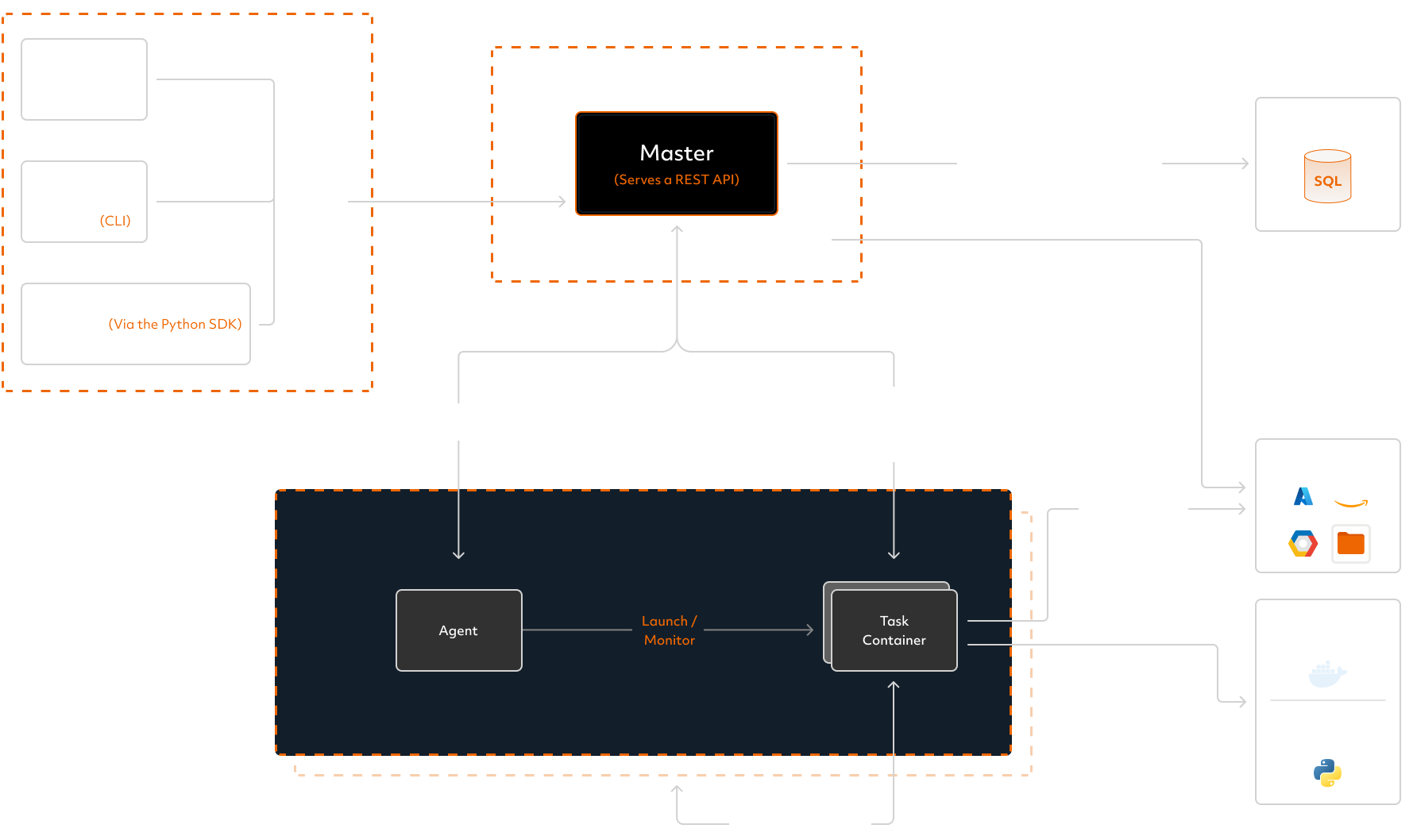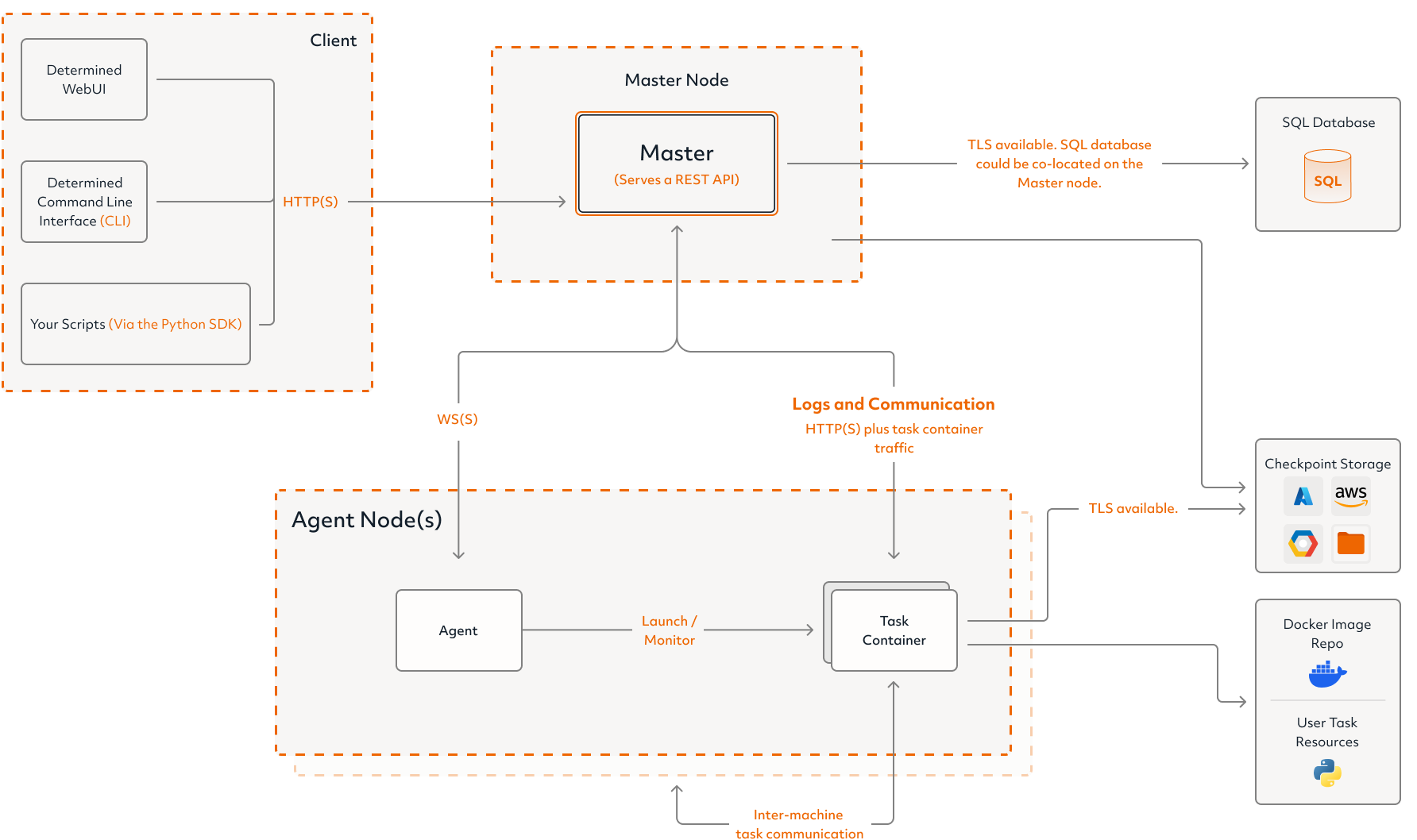System Architecture#
Determined consists of a single master and one or more agents. There is typically one agent per compute server; a single machine can serve as both a master and an agent.


Determined AI System Architecture
About#
The master is the central component of the Determined system. It is responsible for
Storing experiment, trial, and workload metadata.
Scheduling and dispatching work to agents.
Managing provisioning and deprovisioning of agents in clouds.
Advancing the experiment, trial, and workload state machines over time.
Hosting the WebUI and the REST API.
An agent manages a number of slots, which are computing devices (typically a GPU or CPU). An agent has no state and only communicates with the master. Each agent is responsible for
Discovering local computing devices (slots) and sending metadata about them to the master.
Running the workloads that are requested by the master.
Monitoring containers and sending information about them to the master.
The task container runs a training task or other task(s) in a containerized environment. Training tasks are expected to have access to the data that will be used in training. The agents are responsible for reporting the status of the task container to the master.
Network Connectivity#
When the system is configured according to the setup requirements, network traffic flows to and from the master and agents as follows:
Master-Compute Connection: Compute (agent) nodes connect to the master node on the master’s configured port.
Inter-Compute Connection: Compute nodes can connect to each other on any port.
Master-Compute Reverse Connection: The master node can establish a connection to compute nodes on any port.
Docker Image Access: One of the following is true:
Compute nodes can access the Docker image repository, or
Compute nodes already contain the relevant pre-downloaded images.
Checkpoint Storage Access:
Both compute nodes and the master node can access the desired checkpoint storage.
Optionally, client nodes can connect to checkpoint storage access for better performance.
Database Access: The master node connects to PostgreSQL.
User Task Resources: Compute nodes can reach any network resources necessary for user tasks, such as fetching packages from PyPI.
Client-Master Connection: Client machines can connect to the master node using the master’s configured port.